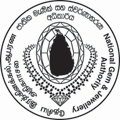The Gems of Paradise
Aquamarines, Rubies, Padmaradchas, Garnets, and Cat’s eye are some of the very many gemstones that can be found within Sri Lanka’s borders. The beauty and rarity of these absolutely gorgeous rocks are enough to put a diamond to shame, as the pure variety of these precious stones outshine the diamond in a heartbeat. This variety is also what makes gemstone as valuable as they are. Most gems extracted from our soil are located in deposits within the Highland complex (northeast to southwest) which contains an extremely high quality of metamorphic rock. Our knowledge of soil composition also lead us to the discovery of a major sapphire deposit in Kataragama during the year of 2012. Sri Lanka has made it’s mark in the international market as a producer of some of the finest gems the world has ever seen, thanks to a culture that revolves around the harvesting and refining of these gem stones. For three thousand years, we as a people have specialized in gem craft, and have adopted the experience and quality that comes with perfecting our skill in the production of these gems.
Of all the gems however, a single gem outshines the rest. The ‘ceylon blue sapphire’ aptly named due to its exclusivity to Sri Lanka, is a beautiful corn blue hue. It is also one of the very few gems that can be sold as a completely natural stone without heat treatment. Although It’s primarily recognized as blue, these sapphires come in all sorts of colours such as; Orange, Pink, Yellow, Green, Lavender and purple, as it is the composition of the soil that determines the colour adopted by these precious stones.


This abundance in gems however hasn't always worked to our advantage, as this very abundance attracted the attention of many sea farers, as Ceylon became a key trade route for procuring spices and other such commodities. This trade route was highly sought after by civilisations such as the British and Portuguese empire who later conquered the country on sperate occasions, with the British Empire holding Sri Lanka as a colony until the late 19th century. Even the royal British crown was adorned with gems and precious stones that were extracted from the island of Sri Lanka.
Although when talking about gems it is not ancient history that one should emphasise upon, but the jobs and cultural heritage that was built around the extraction of the valuable gem stones. With over 25,000 crafters Sri Lanka is called "ratna dweepa" due to the importance we place on gem mining. Most gems workers are jewelery workers, and focus more on implementing the given jewels into ornate jewelery. The rest either work In factories refining jewels or in the scientific sector, where they test the qualities of the precious stones in order to further understand the chemicals behind the rocks. These advancements in both the scientific and trade sectors will hopefully lead to a better and well funded Sri Lanka.





